Understanding Personal Checks: Definition and Implications
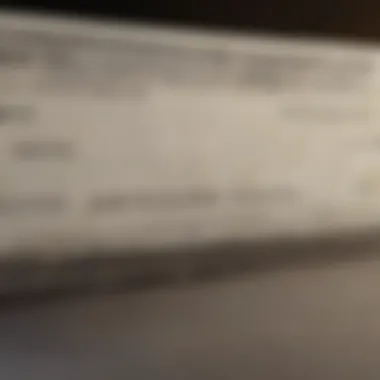
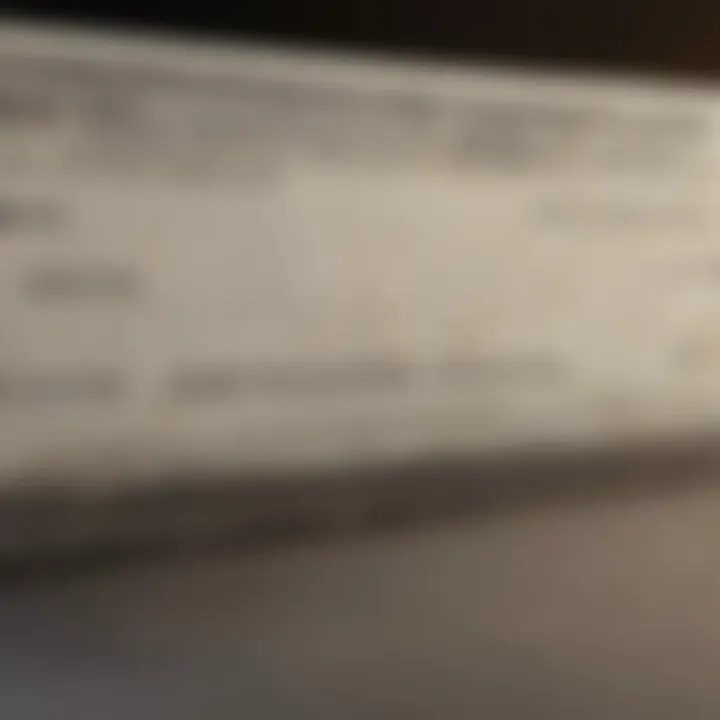
Overview of the Topic
Personal checks occupy a unique position in today's financial landscape. Their role remains significant even with the rise of digital payment methods. A personal check is a document signed by an account holder that directs a bank to pay a specific amount from their checking account to another party. While often used for transactions such as rent, bills, or gifts, they come with their own set of implications and considerations.
Definition and Importance of the Topic
Personal checks provide a means for individuals to engage in transactions without the need for cash. They prevent the need for physical exchange and add a level of security. Also, checks can serve as a written record of payment, which is beneficial for both individuals and businesses. Understanding how these checks function introduces the broader picture of personal finance.
Key Benefits and Implications
Benefits of personal checks include:
- Convenience: Checks can be easily mailed or handed over in person, accommodating various payment needs.
- Record Keeping: Each check leaves a paper trail in bank statements for tracking and verification.
- Flexibility: Users can specify payment instructions, ensuring dedicated amounts reach the right recipients.
On the flip side, checks also bring risks. They can be subject to fraud or bounced if there are insufficient funds in the account. Furthermore, reliance on checks can delay transactions, impacting cash flow for businesses requiring immediate payment.
Understanding personal checks involves recognizing their advantages and limitations. This knowledge helps consumers manage finances more effectively.
Exploring Practical Considerations and Tips
Practical tips are vital to effectively manage personal checks. Always ensure that your checks are securely stored to avoid potential loss or theft. When issuing a check, always fill it out completely, including the date, recipient name, and amount – leaving no spaces that can be altered.
Strategies for effective management includes regular reviewing of bank statements. This helps identify any unauthorized transactions and ensures the account remains in good standing. Setting up alert systems with your bank can also prove beneficial in monitoring large transactions related to check activity.
Case Studies and Examples
A case study to consider is the transition from cash to check payments among individuals involved in household expenses. Many families face challenges in tracking cash contributions. Switching to checks can streamline the process and offer clarity but may delay monthly payments if parties are unfamiliar with writing checks. Potential pitfalls arise when checks bounce due to mismanaged finances, leading to unwanted fees and penalties.
Real-life examples press the importance of timing. Landlords relying on checks for rent fear late payments which can lead to cash flow complications.
Comparison of Financial Products
When discussing personal checks, it's worthwhile to compare them to other financial products. Here are key points:
- Credit Cards: Offer point reward systems but come with high-interest rates if not payed in full.
- Digital Payment Applications: Provide instant transaction capabilities but sometimes lack paper trails like checks do.
- Cash: Easy to use but does not provide records needed for keeping track of expenses.
Each option comes with its advantages and disadvantages requiring individuals to choose based on their unique situations and needs.
Expert Insights and Recommendations
Financial experts recommend understanding the specific uses of personal checks and situations when they are most efficient. They also emphasize the importance of maintaining enough funds to cover issued checks to avoid bouncing, which can damage one’s credit score. Knowing and navigating the procedures of issuing, receiving, and endorsing personal checks effectively can contribute to a well-managed financial life overall.
Definition of a Personal Check
Understanding personal checks is crucial for navigating the modern financial landscape. Personal checks serve as a traditional form of payment that offers both convenience and a level of accountability. By defining what personal checks are, we can gain insights into their roles in daily transactions, risk management, and even budgeting. This section aims to clarify the key elements and its implications on finance, helping users make informed decisions when considering the use of this payment method.
Basic Features of Personal Checks
Personal checks possess certain features that make them distinct. The most notable characteristics include:
- Paper Format: Personal checks are typically printed on specialized paper, designed to prevent fraud and unauthorized copying.
- Pre-printed Information: Each check includes a pre-printed account holder’s name, address, and banking details, ensuring that the check is uniquely tied to an individual’s bank account.
- Check Numbering: Personal checks have an associated check number, usually printed at the top right corner. This feature aids in tracking and managing expenses.
- Amount Specification: The check allows for accurately stating both the amount in numbers and in words. This design reduces chances of misconceptions in the transaction.
When these features are analyzed, it becomes evident that personal checks not only facilitate transactions but also offer a level of security and tracking that electronic transactions may lack.
How Personal Checks Differ from Other Checks
Personal checks are often confused with business checks, money orders, or cashier’s checks. However, there are distinct differences that are noteworthy.
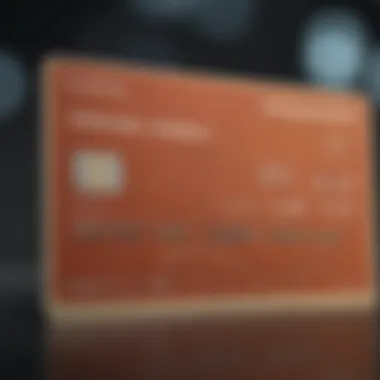
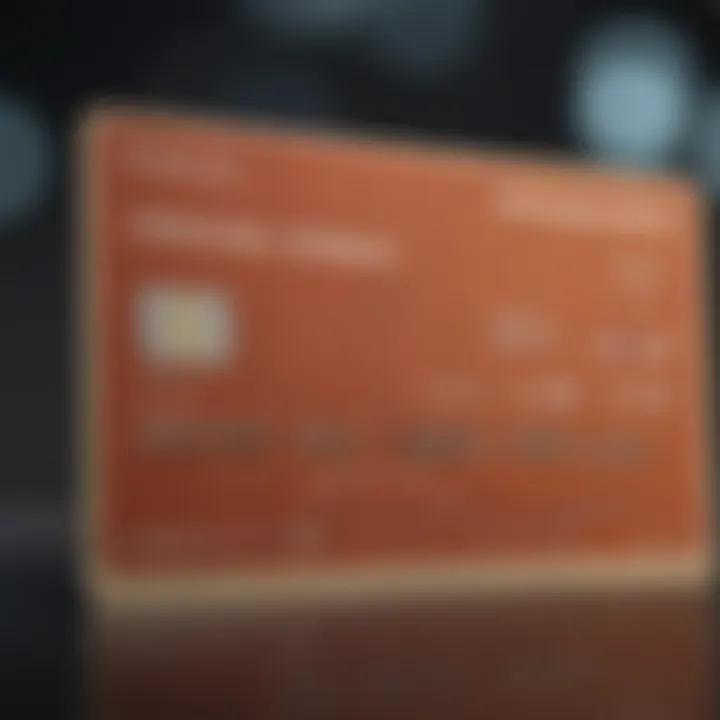
- Issuer: Personal checks are issued by personal bank accounts, whereas business checks are issued by business accounts. Legal and compliance factors vary greatly depending on the issuing source.
- Funds Availability: Unlike a cashier's check,ri which guarantees funds due to the issuer holding the money, personal checks depend on the account holder's account balance, creating a potential for bounced checks.
- Purpose of Use: Personal checks are often used for personal transactions like paying bills or transferring money between friends, whereas business checks are used within commercial contexts, such as making payments for services or payroll.
- Verification Processes: Personal checks might lead to extra scrutiny by recipients, who may question authentication compared to more secure types of checks.
All these aspects create a clear delineation that highlights the necessary caution and considerations when deciding to use personal checks versus other available payment methods.
Components of a Personal Check
Understanding the components of a personal check is vital for ensuring its effective use. Each element serves a specific purpose and contributes to the check's validity. Clear understanding can also help avoid errors, fraud, and mismanagement of funds. With personal checks, precision in details is necessary because any mistakes can lead to complications in financial transactions.
Payee Line
The payee line is one of the primary components of a personal check. This is where the name of the person or entity receiving the payment is written. Importance of this line cannot be overstated; if the payee details are incorrect, it may cause the check to be refused or leading to legal complications.
When filling out the payee line, ensure that you write the full and accurate name. Any abbreviations or misspellings can lead to issues when the check is cashed or deposited. In situations where the funds are intended for more than one person, it can be noted as 'Pay to the order of', followed by the respective names. This adds clarity and prevents misunderstandings regarding the intended recipient. Accuracy in this facet ensures that the funds are directed to the appropriate recipient promptly.
Amount Section
The amount section, another crucial component, signifies how much money is being transferred. It usually consists of two parts: numeric and written format. Writing down the amount in both formats reduces the chance of misinterpretation.
For example, if a check is written for $150.00, it should be stated in digits as '150.00' and in words as 'One hundred fifty and 00/100 dollars.' Doing this decreases chances of fraud or errors while depositing. Anyone who reads the check can clearly understand the intended amount without room for doubt. It's critical to note that discrepancies can arise if these amounts do not match, which may lead to checks being returned or refused.
Signature Line
A signature line might seem simple but is perhaps the most important feature of a personal check. Signing your name here grants permission for withdrawal of funds from your bank account. Without it, the check is deemed invalid. Moreover, the significance of the signature rests in its uniqueness— each person's signature acts as an ID confirming authenticity.
Clarity and regularity are crucial here; if you typically sign with a certain style, keep it consistent. Discrepancies in signature can raise suspicions during processing. Hence, familiarity with your signing style can prevent complications during deposit or cashing.
Memo Field
Often overlooked, the memo field holds significant potential. While it is not necessary, entering a brief note about the purpose of the payment can aid the payer and payee in record-keeping. Making it a habit to jot down relevant details, like “July Rent” or “Payment for Invoice #123”, can simplify future references to the transaction.
This can be especially useful for tracking spending or managing budgets responsibly. In addition, having a clear record of payments made honors transparency and accountability between involved parties. Many people may find it handy during tax season too, as it provides a clear paper trail.
By understanding the components of a personal check, one equips themselves with knowledge that enhances responsible financial management. This can help in making informed decisions while handling daily transactions.
Types of Personal Checks
Understanding the various types of personal checks is crucial. Each type serves a specific purpose and comes with its unique features and benefits. These checks can fit into different financial scenarios that individuals and businesses may encounter. By examining standard personal checks, counter checks, and traveler’s checks, one gains insight into their utility and appropriate application.
Standard Personal Checks
Standard personal checks are the most common form of checks used today. They issued by individuals for personal transactions such as paying bills, shopping, or compensating services. What makes them significant is their widespread acceptance and ease of use.
A standard personal check usually displays the account holder’s information, a unique check number, and the payee’s details. They can be obtained from banks or ordered in bulk from printing companies. Standard checks also allow individuals to track their spending. This can aid in budgeting since each issuance of a check creates a record, making it simpler to maintain an overview of personal finances.
Before using them, it's paramount to ensure sufficient funds are available to cover the amount of the check. This helps to avoid any potential drawbacks associated with insufficient funds.
Counter Checks
Counter checks serve a different purpose. These are blank checks provided by banks to customers when no personal checks are availble. If individuals find themselves needing a check urgently, counter checks can be lifesavers. However, they do not come pre-printed with the account holder's personal information. Instead, they require the bank teller’s verification.
While convenient, they carry certain limitations. For example, some merchants may hesitate in accepting counter checks. They might appear less formal or reliable compared to standard checks. Therefore, individuals should consider the context before relying on counter checks for transactions.
Traveler's Checks
Traveler’s checks have a distinct role. Though not used as commonly in today’s digital world, many travelers find them to be essential for safety and convenience abroad. Issued in specific denominations, traveled checks are pre-signed and can be cashed or used like cash.
Their greatest advantage lies in reducing risk while traveling. If a traveler’s checks are lost or stolen, they can be replaced relatively easily, unlike cash which is often non-reclaimable. This makes them an attractive option for individuals who want to travel securely, allowing peace of mind in unfamiliar environments.
Regulatory Guidelines and Security Features


Regulatory guidelines and security features are critical components in the world of personal checks. Understanding these aspects ensures that individuals and businesses can navigate payment processes with assurance. This part of the article outlines the legal framework that governs personal checks. It also highlights essential security mechanisms designed to minimize risks associated with misuse and fraud.
Regulations Governing Personal Checks
Regulations surrounding personal checks are established to protect both issuers and recipients from potential issues. One primary legislation is the Uniform Commercial Code, or UCC. This law facilitates uniformity in check processing across states, ensuring that personal checks are universally recognized and validated.
A key component of these regulations includes the requirement for specific information on checks. This includes the date, payee, amount, and signature. Errors or omissions in these details could lead to processing delays. Institutions such as the Federal Reserve also contribute to providing guidelines on how checks must be processed and negotiated.
When issuing checks, it is important to maintain documentation. Banks typically require proof of the relationship between the entities involved when large amounts are transferred. This checks system aims to enhance security and curtail fraudulent activities prevalent in common checking practices.
Common Security Features to Prevent Fraud
Various security features have been integrated into personal checks to prevent fraud. These features can save both writers and recipients significant financial and emotional distress. Some common security aspects include:
- Watermarks: Genuine checks often feature a watermark that confirms their authenticity. This representation deters reproduction.
- Microprinting: Microscopic text printed on checks becomes illegible or difficult to reproduce with standard photocopying machines, providing another security layer.
- Color-shifting ink: Some checks also use materials that allow colors to change when viewed from different angles, making them harder for counterfeiters to replicate.
- Check serial numbers: Each check typically includes a unique serial number. This enables tracking, particularly during disputes about fraudulent payments.
These measures are fundamental in creating a robust framework aimed at securing financial transactions involving personal checks.
Consistent awareness of regulations and security features associated with personal checks also plays a role in financial literacy. Always ensure that these characteristics are present and functioning to maximize security, and prevent becoming a victim of mail theft or check counterfeiting.
Advantages of Using Personal Checks
The use of personal checks brings several benefits that can be valuable for both individuals and businesses. Understanding these advantages is crucial, as they offer insights into why many still prefer this method of payment despite the rise of electronic alternatives. Personal checks can simplify transactions and provide advantages like ease of use, effective record keeping, and a reduced risk of theft compared to cash. Each of these aspects helps illuminate the role personal checks play in contemporary finance.
Ease of Use
One of the most notable merits of using personal checks is their simplicity and accessibility. Personal checks are straightforward to obtain and write, making them user-friendly for those who may be less familiar with technology. For individuals who may not have bank cards or access to online banking, personal checks provide a practical solution. Writing a check requires minimal tools; only a pen and a checkbook.
With clear sections for the recipient's name, amount, and signature, personalization of checks is easy. There are fewer complications than processing mobile payments or automated transfers.
"Checks provide an analog alternative for people who are more comfortable with traditional financial methods."
This ease of use applies especially for smaller transactions, bill payments, and for formal situations where an increased sense of validation is desired. Additionally, writing someone a personal check allows for clearer communication of the payment details, which can then be easily read and verified.
Record Keeping Benefits
Another significant advantage of personal checks is their utility in maintaining thorough records. Each check presents the opportunity to document transactions clearly, providing a paper trail for accounting purposes.
When payment is made, the details can be easily noted in a ledger or account book along with the stamped bank information once cleared. This type of record keeping helps not only individuals but also small businesses verify transactions during tax preparation.
The memo field also allows individuals to attach additional information about the transaction purpose, exemplifying how check usage encourages detailed note-taking.
- Clearly dated
- Easy to reference later due to archived records
- Aids in tracking overall spending habits
These factors collectively help represent an organized and financial discipline through tangible records.
Reduced Risk of Cash Theft
Personal checks also reduce the risk associated with cash transactions. Cash is vulnerable; if lost or stolen, it is incredibly challenging to recover. In contrast, if someone misplaces a check or it gets into the wrong hands, measures can be taken to prevent unauthorized withdrawal. This triumphed scenario illustrates a significant consideration in opting for checks instead of cashing out.
Moreover, when writing a check, the transaction requires the bank to provide direct verification of the account funds, thus eliminating the risk of holding on to physical cash that can attract theft.
The transition from cash also contributes to financial trackability, as checks inherently demand users to at least monitor their deposits. By providing such high adaptability for transactions, checks fulfill a vital purpose in ensuring safety and security in financial matters.
Disadvantages of Personal Checks
Personal checks serve several purposes, yet they come with distinct disadvantages that can impact both the consumers using them and the businesses accepting them. Understanding these drawbacks is crucial for making informed financial decisions. This section highlights three primary disadvantages: processing delays, the risk of insufficient funds, and the potential for check fraud.
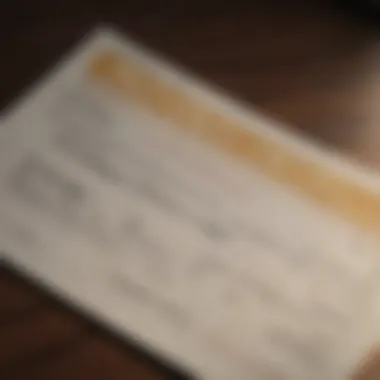
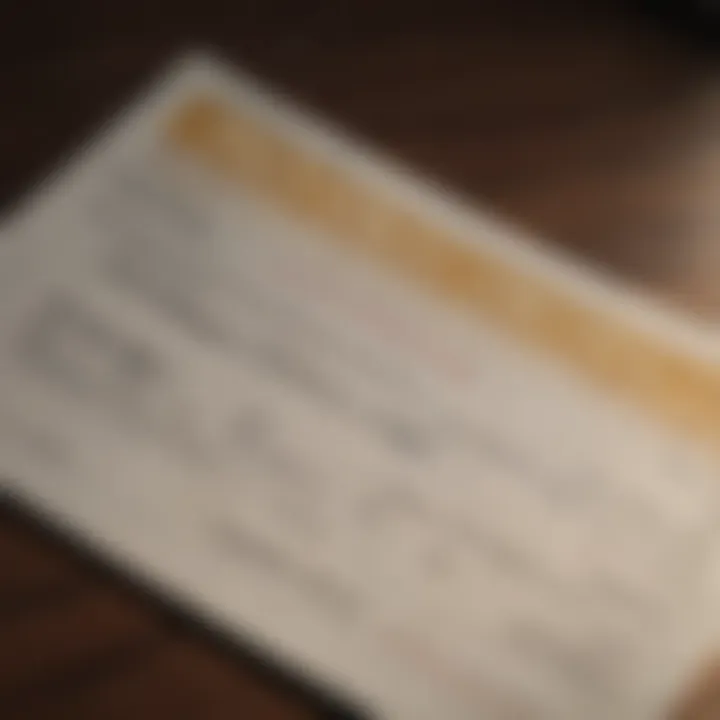
Processing Delays
When using a personal check, it is common to encounter processing delays. Unlike electronic payments, which are instantaneous, checks go through a series of steps that can slow down the transaction. Banks need to manually process checks, and this can take days or even longer for the recipient to receive the funds. The time it takes for the check to clear means that both the payer and payee wait longer for confirmation of payment. This can create cash flow issues for businesses that rely on timely payments. For instance, a small business may struggle to meet obligations while waiting for a customer's check to clear. Efficient planning is key here, and understanding these delays can help in managing finances effectively.
Risk of Insufficient Funds
There is always the risk of insufficient funds when accepting personal checks. If a check is written without sufficient funds available in the payer’s account, the withdrawing bank will return the check marked as “NSF” (Non-Sufficient Funds). This can lead to various issues. The payee not only faces the inconvenience of needing to secure payment once more, but they may also incur overdraft fees from their own bank. Banks can charge service fees to the individual who issued the insufficient funds check. This scenario creates a added layer of complexity and risk for businesses, as they must decide how to recoup their losses while maintaining good customer relationships.
Potential for Check Fraud
Potential for check fraud poses another significant disadvantage for personal checks. As with any paper transaction, checks can be stolen, forged, or altered. Cybercriminals can target both individuals and businesses. In fact, fraudulent activity related to checks tends to go unnoticed until the damages are substantial. To mitigate this risk, businesses must rely on various security features and procedures. Regular monitoring of bank statements can help identify unauthorized activities, but many still fall victim before detection.
Effective management of potential fraud includes adapting to new payment technologies, which can reduce reliance on checks.
In summary, while personal checks offer some advantages, they also come with a set of disadvantages that warrant careful consideration. Awareness of these drawbacks can help individuals and businesses navigate the financial landscape more effectively.
Using Personal Checks Responsibly
Using personal checks responsibly is crucial in maintaining financial health. It involves understanding their function and limitations while adopting best practices to optimize their benefits.
Maintaining Accurate Record-Keeping
Having a precise record-keeping system can significantly enhance your management of personal checks. This entails noting every check you write, including details like the date, payee, and amount. You can accomplish this using a check register, or digital banking tools. Keeping meticulous records can also aid in tracking your spending habits and ensuring better budgeting.
- Utilizing Bank Tools: Many banks offer features that allow customers to track their check usage within their online accounts.
- Checking for Errors: Discrepancies in your records can lead to financial confusion or even overdrafts.
Efficient record-keeping helps avoid unnecessary fees and promotes accountability.
Ensuring Proper Fund Management
Another critical aspect of using personal checks is managing your available funds. Knowing your balance before issuing a check is essential to prevent bouncing it, which can attract significant penalties. Regularly review your bank statements and set alerts for your account balances for better management.
- Budgeting: Create a budget plan that includes daily needs and expenses to maintain a sustainable checking balance.
- Emergency Funds: Maintain a buffer in your checking account to accommodate unplanned expenses or overdrafts.
This proactive approach ensures efficient financial operations and builds long-term financial stability.
Identifying Legitimate Transactions
When using personal checks, discerning legitimate transactions is vital. Assessing who gets paid and why can reduce the potential for fraud or disputes later. Always inquire thoroughly about services or goods before issuing a check.
- Trustworthiness of Payees: Always know your payees personally or have their credentials verified before processing payments.
- Document Keeping: Retain copies of checks and any supporting documents as evidence of legitimate transactions.
Vigilance in transaction verification bolsters confidence in using personal checks and minimizes risks associated with their improper use.
Culmination: The Role of Personal Checks in Finance
Personal checks serve crucial functions in personal finance and have unique roles. Understanding their values is essential for consumers and businesses. Here, we explore the implications and contributions of personal checks as we analyze contemporary trends and potential future outcomes.
Current Trends in Payment Methods
The landscape of payment methods is shifted significantly. Digital transactions have taken center stage. Numerous people favor electronic methods like credit cards, mobile wallets, and bank transfers. Even with this shift, personal checks still hold significance, especially in certain scenarios.
- Checks for Larger Transactions: Personal checks often emerge in high-value transfers. Individuals and businesses may handle transactions that do not shift smoothly through digital mechanisms, such as real estate closings or high-ticket sales.
- Elderly Preference: Many older people remain loyal to checks. They are familiar with the process and often reluctant to adopt new technologies. Personal checks offer a tactile and tangible feel that suits some users well, fostering trust and comfort.
- Businesses Uses: Many companies implement personal checks for payroll, vendor payments, and invoicing. This method can manage cash flows in ways electronic systems may not always accomplish.
However, this does not mean that the frequency of checks is increasing. Overall, there is a steady decrease in the use of personal checks compared to electronic payments. Yet, their ongoing relevance highlights a broader need for integration within an evolving landscape.
The Future of Personal Checks
The future of personal checks rests at an important crossroad. While their popularity is decreasing, several factors will determine their relevance moving forward.
- Digital Enhancement: Innovations may arise to blend checks into digital scenarios. For example, features to connect paper checks to mobile applications could evolve, boosting efficiency and security.
- Regulatory Changes: Government adaptations associated with banking and finance will rewrite landscapes. New regulations may cater to or even restrict how checks are utilized, affecting their overall impact.
- Consumer Education: A key to maintaining checks lies in improving understanding about them. Many consumers still lack comprehensive knowledge of check safety or effective ways to employ them within a modern wallet.
In retention or decline, personal checks exhibit complexity in their usage. They will likely retain a niche role even in a consolidated market, accommodating those who prefer traditional methods while adapting to the melding industry surroundings.
In sum, personal checks continue to signify a blend of the old and the new. They embody a functional bridge between traditional and modern payment methods, pointing out the evolution of consumer preferences. Therefore, all engaged with personal checks must remain aware of their continuously transforming role in personal finance.



